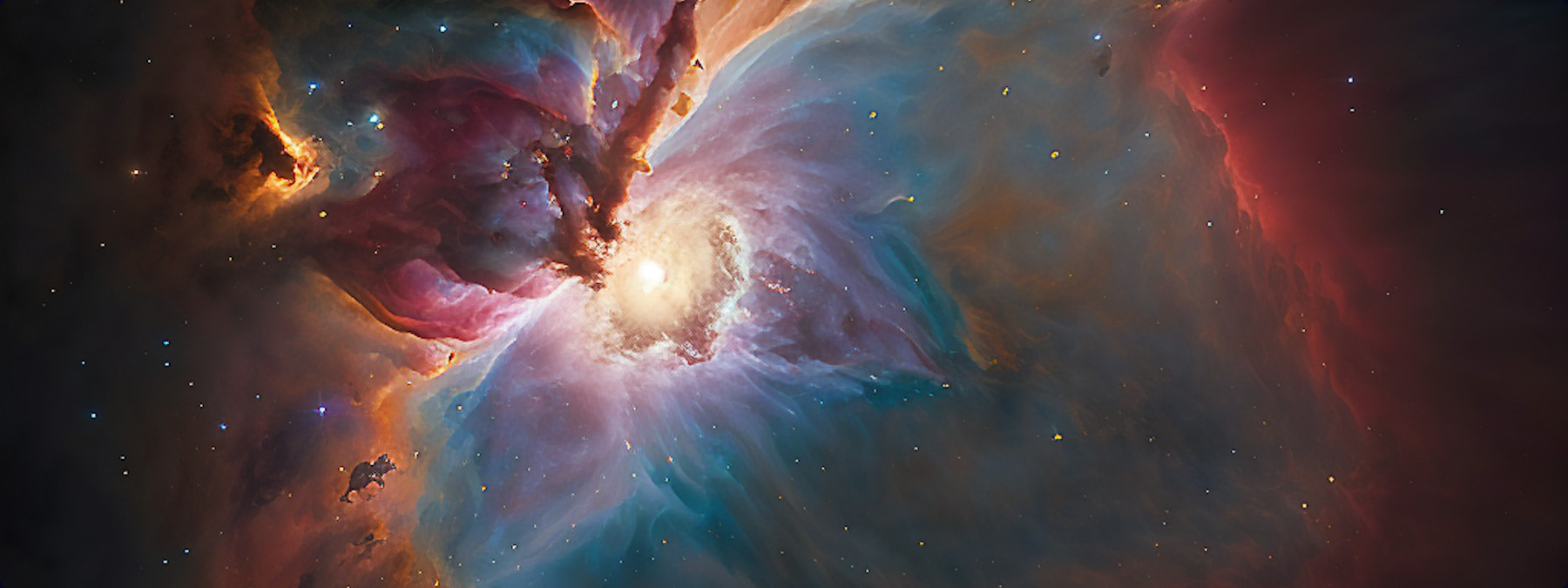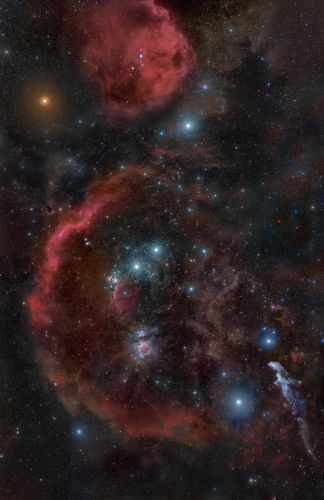Major Civilizations
All of the major Civilizations here have post-scarcity economies in some way, have discovered nuclear fusion on their own, are constructing their own Dyson Swarms, have access to electrical immortality, and are generally stable.
Author's Notes
- Kardashev Scale is used for now to indicate a generalized idea of the size and power of the civilization, but it is not the best way to do it, especially if I start describing other advanced civilizations from other sectors. I'm working on a better system that better takes multiple factors into account, but it's not good for public consumption yet.....
- The Capital E in subscript ( E ) indicates that the measurement of years is Earth based, as all of these civilizations have their own ways to count time and years. They also have their own number systems, but we'll be keeping those at Base 10 forever.
- Unless otherwise stated here or in each Civilization article, you can expect each of these races to generally be human shaped, human sized, and can expect them to grow and mature at a similar rate.
Vusinor
Homeworlds: Kunwold in the Venjint System
Average Lifespan: 220
EYears
Total Population: 90 Trillion
Kardashev Scale: 1.5
The Vusinor are the most powerful civilization in the Sector, and for hundreds of surrounding Sectors. In terms of technological advancement, they are in the middle of the top 50 civilizations in the Galaxy. In terms of size, they are nowhere close to the top, even with a population of 90 Trillion. They have settled almost every rocky body they could find in a dozen systems surrounding their home system, and have outposts in over a thousand others spread across the Cairn Sector, the nearby Feihia Sector, and the further away Rhofiun Sector. They have six Dyson Swarms currently under construction.
The Vusinor have skin that ranges from dark green for those adapted to live on the equator, to light blues and violets for those that live closer to the poles. Their hair ranges from dark purples, dark reds, and darker greens and resembles seaweed in appearance. They have large eyes that can see quite far into both the Infrared and UV spectrums.
Regalti
Homeworlds: Collena, Sephar in the Delvi System
Average Lifespans: 85
EYears (150 in space)
Total Population: 114 Billion
Kardashev Scale: 1.05
The Regalti prefer to live in space instead of on their homeworlds. Due to their physiology, they live longer in a lower gravity environment, but that isn't the only factor. 99% of their species now lives in space in a Dyson Swarm that is slowly being constructed and is expected to be completed in another hundred thousand years, if they have the will to continue building it. Their largest planetary population is on Collena at just over a billion people, while the population in space is around 112 billion now.
The Regalti have semi-translucent skin that is naturally a tan color but appears more red, lighter or darker depending on specific race and radiation exposure, but it has an understructure that can uniformly change into almost any color. It doesn't happen at will, and is due to an expansion of tiny blood vessels just under the skin. They can appear as a deep crimson color, fully green, or blue or purple. Their hair resembles small feathers that grow through their lives and the structure of the these feathers can make them appear red and one of any other color depending on the angle you view them from
Maorians
Homeworlds: Vanuitia in the Aquron System
Average Lifespans: 6400
EYears
Total Population: 55 Billion
Kardashev Scale: 1.15
The Maorians are long lived, very long lived. They continuously and slowly grow throughout their lives. An adult at 40 years old will be 1.5m tall and weigh 75 kilograms, but at the end of their long life, will be 4m tall and weigh 600+ kilograms. Some races of Maorians have been recorded as reaching 8m tall and weighing more than 2000 kilograms. They are so long lived that adults that were barely 50 years old got on the first "generation" ships to settle a nearby star system, and were still quite able bodied at 2900 years old when the ship reached its destination 12 light-years away.
Maorians can reproduce only twice in their lifetimes and they have a 50% chance of having more than one child each time they do it, and a 25% chance of having 3 or more children each time. Combined with the usual death rates of an advanced civilization, their population grows rather slowly, but is also one of the most stable in the galaxy.
Maorians have smooth, light grey skin with no hair. When exposed to above freezing temperatures of their homeworld combined with an atmosphere with enough carbon dioxide, their skin produces a constant source of nanocrystals, made of carbon and silicates, which can make them appear to be made of rock sometimes or even appear to look like they are covered pieces of seashells. This shell is quite protective and breaks off naturally after building up enough, but can also be easily washed off after soaking in water for a time. This process is somewhat related to the carbon cycle that occurs on most life-giving worlds. Maorians can also take vitamin supplements to prevent the growth from happening at all, which is preferable in space ships and in space stations.
Yil
Homeworld: -Unknown-
Average Lifespans: 60
EYears
Total Population: 18 Billion
Kardashev Scale: 1
The Yil are a short, yellow skinned humanoid species with four arms. They don't have an internal skeletal structure, instead relying on thousands of small, compressed, Argon filled sacs that form a more classical bone structure. They have several strange alternate biochemistries, and can also survive much warmer and colder temperatures, and much more toxic environments than that of other carbon-based life. They are also a rather short lived species.
The Yil were originally a slave race, owned by the Sseterri, a K1.5 civilization that owned several entire species and tried hiding them from the Galactic Council. The Vusinor purchased the Yil from the Sseterri and then freed them, giving them a system in the Cairn Sector of their own. To the Vusinor, the Yil are better off free, but also better off working for them. Most Yil assist the Vusinor in building their many Dyson Swarms around their many star systems, working in environments that are outright toxic and deadly to most other forms of life.
Minor Civilizations
Maenor
Homeworld: Ablabok
Average Lifespans 65
EYears
Total Population 93 Million
Natives of the "Siltauxen system". They call their world Ablabok, but the Vusinor currently classify it as "Siltauxen c.". The Planet has been slowly turning into a "Snowball World" over the last several hundred thousand years. Glaciers exist everywhere on land and in the oceans except near the equator. All life is extinct except for at the equator as well, or living in the oceans under the ice that can be up to a mile thick in spots, and at the poles reach to the ocean floor. Calculations show that the ice age will soon end, in several thousand years.
The Maenor evolved while the planet was slowly freezing, and are able to breath both the seawater and the specific atmosphere of their world, which is extraordinarily rare in the Galaxy. Most ocean based civilizations can't breath in an atmosphere at all, and unable to have access to fire, are stuck in the stone age forever.
They have a large civilization in the southern ocean under the ice that has shown to be friendly to the Vusinor. The rest are scattered across the world in smaller tribes. The Vusinor have made contact with the Southern civilization, who call themselves the 'Maiablon'.
Zarni
Homeworld: Fragtun in the system Dartwil
Average Lifespans 75
EYears
Total Population 117 Million
The Zarni are a race of humanoids with hooved feet. Their bodies are completely covered with short coarse fur that comes in a variety of colors and patterns. Their hands only have two fingers and a thumb that end in a hardened nail. All three digits are opposable to each other. Their ears are long and leaf shaped, sitting on the top of their head. They can turn these 180 degrees in any direction. While they have large eyes allowing for them to see in a variety of conditions, they can't see the color blue.
Their civilization has advanced to a point where iron working is common across the Mediterranean portions of their home world. They have domesticated cattle and grow crops. Their society seems to be partially based on their fur patterns. They will arrange marriages in order to get an ideal coat for their children which will guarantee them a better spot in society, and there is an entire profession dedicated to researching and figuring out what fur patterns will result out of any given union.
Vusinor Research Log
VMN 371
We managed to finally acquire a freshly expired, and intact corpse to examine. Don't worry, we didn't trade any technology, unless the metallic covering of the berry sauce packets we gave them counts. They love the taste of that stuff! They used several in a ritual offering to their gods instead of the body. We promised that the spirit will find his way to the heavens above the ice and sky (literally).
I take full responsibility if this ends up violating policy, but digging the already digested body out of the stomachs of raysharks was not getting us anywhere fast in understanding the biology of the Maenor.
After dissecting the body, we found that they do in fact have a set of primitive lungs that are separate from their gills, connected to the circulatory system in a completely different location. but as they never breathed air in their lives, in hundreds of generations, they might not be functional anymore.
This fully backs up earlier stories we recorded from the Maenor, telling of a time when there was no ice, when they could see the stars in the sky, when they could go onto land to gather food and materials for building.
It will be another several thousand years before the ice fully melts. I wonder if they will freely go onto land again and if their lungs redevelop? They will at the very least be quite happy to learn that those 'spider-demons' they told us a number of stories about are all extinct from the ice age when they do venture on land again!
Also, as with every other time we made contact with them, not a single one agreed to come with us and visit the surface through the ice. They explained in detail, again, that they are living under the ice until their gods give them a sign, and a hyper advanced alien civilization drilling through the ice is not one of them.
-Zilda Marn, Class B Research Agent
Maorian Research Log
Tectonic Report part 9: Final
Mantle Plume 2 is observed to be rotating at a rate of 3km per year at the outer edge, and is definitively the source of all the quakes in this part of the planet. Luckily the supercontinent is simply floating on top for now, and is spinning in place at a much slower rate (about 25cm per year). There are no large basalt eruption scenarios that we can simulate for now, which means that other than a few smaller eruptions here and there, the Zarni people will be safe and their civilization could develop for a hundred thousand more years if they have the will to do so.
It will be only a matter of time before the mantle plume starts to break apart the supercontinent, and because it is rotating in place, it will break the continent up into quite a few smaller pieces. To say this planet will turn into a volcanic hellscape similar to Vanuitia is a massive understatement. But unless the Zarni wipe themselves out before then, they'll be a space faring civilization long before this becomes a real problem.
- Tyula Quil, Fn 15
The Firion Molecular cloud
Human Knowledge of the Firion Cloud can be found here:
Orion Molecular Cloud Complex. And while Humans are not the best at measuring the vast distances and sizes of stellar objects, their measurements are more than accurate enough to get a basic understanding of this complex star-forming region of space. This article will be more concerned with describing what this section of space is and means to those that live here.
Firion Nebula
The largest star forming region in the Cairn Sector, and the largest star forming region for over a thousand light-years in every direction. It has over 100,000 M☉ of protostars and material, forming a bright beacon in space, and is used as a landmark, forming the very center of what the Galactic Council designated as the Cairn Sector. Even locally, the nebula is a bright marker in the sky for thousands of intelligent species for thousands of light-years, and is often one of their most studied, and sometimes worshipped stellar objects.
The Vusinor call it Firion. One of their early civilizations had a tale called the "Youiteln Firie" which in their modern language translates to "Epic of Firion". It was the tale of their very first hero, and the most important character in their mythologies outside of the gods. Firion challenged the cruel Gods, who played with the Vusinor for their own petty gains. The Gods struck down Firion, but not before he inspired the rest of his people to rise up and chase the Gods back to the stars to never return.
The Maorians call it Actonqua. Their earliest civilizations believed it to be the source of all air in the universe, where the purest form of this element could be found. They viewed each of the brightest Nebula as heavens, having around 12 total, and Actonqua was the holiest and highest heaven they could aspire to reach after death.
The Regalti call it Sepalla. Their mythologies say that is is a piece of the cosmic ocean (the Milky Way), that the Gods kept separate after creation. They are to use it to recreate Collena and the rest of the universe after it gets destroyed by the great darkness, after the end of all things.
Cloud of Darkness
Image used as example of a dark nebula
A rather small Dark Nebula, around 10 light-years in diameter. Designated LDN 1622 on Earth (and sometimes called the Boogeyman Nebula). Unreliable Earth measurements place it anywhere from 500 to 1500 light-years away from them, but It sits about 100 light-years from the Regalti in the Delvi System, and affects the ability of the Regalti to visually observe a small portion of the sky. It is rather unimportant to the Vusinor and Maorians and is often a footnote in records describing much larger and more impressive dark nebula.
The legends surrounding this Nebula in early Regalti civilizations were varied. One civilization used it as a representation of the Void, ever present, opposite to everything else, but currently losing the war of the cosmos. It wasn't an aspect of one of their gods. It was literally nothing. Another civilization believed it was here that all gods and life came from and filled the world with life. Others believe that it was a portal to hell itself, a dark, cold place where evil things dwelt.
Ventar
Called 'Betelgeuse' by humans, 'Iruin' by Maorians, and 'Zika' by Vusinor, Ventar is a large, bright red star. From the perspective of Earth, it appears as a red hypergiant that will explode any day now. From the perspective of the Regalti, it is easily the brightest star in the sky outside their system, and is the second brightest star in the sky to the Maorians and Vusinor outside of their systems. Ventar sits on the outer edge of the Cairn Sector, being almost 700 light years from the center.
Ventar is a Regalti word for God, and several early civilizations of Collena worshiped the star as either their only deity or one of their most important deities because of its red color. They worshiped it even over their own star, Fevalter, to be nothing more than the son of God or a minor God due to its yellow color. Other civilizations claimed Fevalter was more important because she was close and gave them warmth while Ventar was distant. It led to numerous holy wars in the early history of the Regalti.
Early Regalti also tracked Ventar's strange and seemingly random periods of variable brightness, creating long cycles that they integrated into their calendars.




Comments